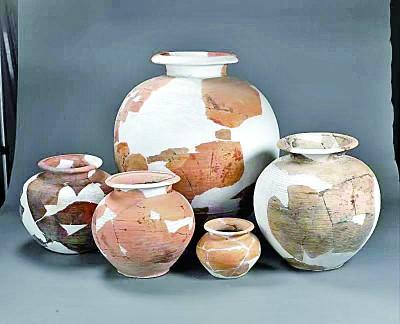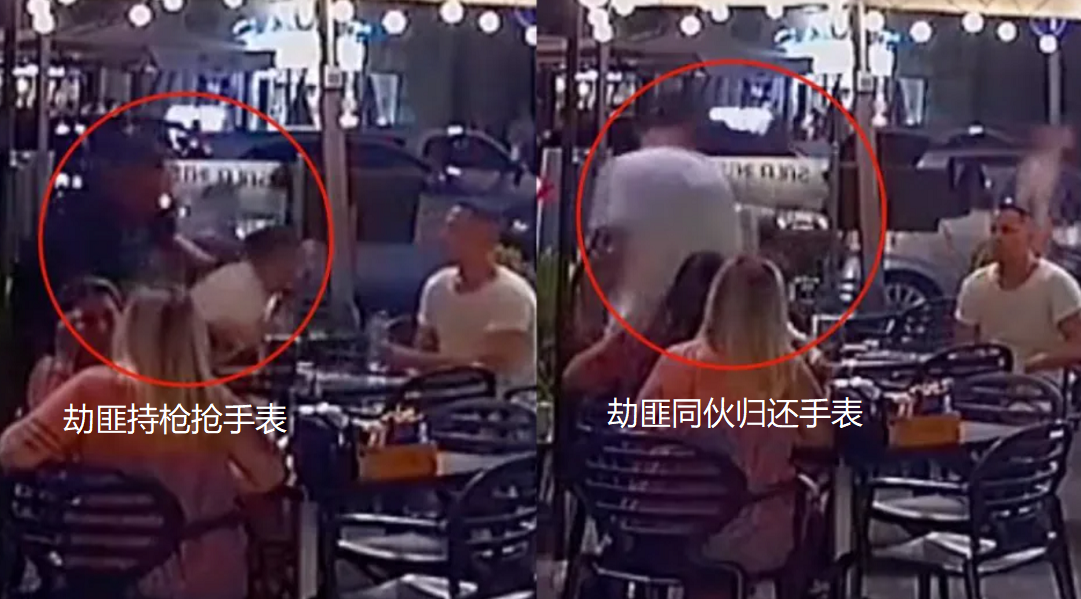Interpretation of Liangzhu Civilization's Rise and Decreased Key
Author:Guangming Daily Time:2022.07.24

"Looking for Lost Civilization" Liu Bin is the Zhejiang ancient book publishing house

The red pottery tank unearthed from Bianjiashan is selected from "Looking for Lost Civilization"
In July of this sun, a new work that focused on the ancient city of Liangzhu, may make readers feel calm. It tries to retrieve the lost civilization that was lost thousands of years ago through the form of archeological essays.
Maybe it is an opportunity, or it is a coincidence that July is a special month for the author. Three years ago, in July 2019, Liu Bin, a professor at the School of Arts and Archeology at Zhejiang University, witnessed the Liangzhu Ancient City site of China Liangzhu in Azerbaijan. In July 2007 15 years ago, the archaeologist who hosted and participated in many major sites discovered the ancient city of Liangzhu.
It was also three years ago that he mainly wrote and organized the "Comprehensive Research Report of the Liangzhu Ancient City Site", which won the Qian Xuesen Gold Award selected by the Hangzhou International City Studies Research Center in 2019. The "Comprehensive Research Report of the Liangzhu Ancient City Site" has explained the authenticity and integrity of the Liangzhu ancient city site that highlights the universal value, and has become an important academic support for the application of the world cultural heritage of Liangzhu Ancient City.
As the sister's article of the "Comprehensive Research Report of the Liangzhu Ancient City Site", "Looking for the Lost Civilization" became a world cultural heritage in Liangzhu Ancient City site, and the author Liu Bin used his archeological experience to tell the reader that the ancient city of Liangzhu from the site to the inheritance heritage The journey and mind. In the narrative, the author described the value of the Liangzhu archeological heritage in a simple way, allowing readers to clearly realize that archeological heritage has an irreplaceable role in exploring the origin of Chinese civilization.
It can be said that the idea of the book "Looking for Lost Civilization" is clever. Insert a "wedge" between the preface and the directory -my Liangzhu archeology road. Among them, the author reviewed the 40 years of studying from the beginning of archeology in 1981 to the success of the Liangzhu application in 2019. In the meantime, the Liangzhu Site Conservation Expert Advisory Committee was established in 2002 and the establishment of the "Liangzhu Site Protection Master Plan" was divided into two years before and after. The author has the archeological experience and thinking of the previous 20 years, and has the familiarity and love of the magical land of Liangzhu, from the living site of Liangzhu people to the cemetery of Liangzhu people, from the anti -mountain Liangzhu King Mausoleum In the ancient city of Liangzhu, step by step into the world of Liangzhu people, and enter the Liangzhu Kingdom of 5,000 years. He said affectionately: "Looking back for 5000 years, this is the fate of me and Liangzhu, and it is also a mission." On July 6, 2019, the night of the Liangzhu Ancient City site was successful. So "I'm in Baku Tonight" flows out of the keyboard, and tonight is destined to be eternal/Liangzhu/Azerbaijan.
In 2020, Liu Bin became a professor at the School of Arts and Archeology at Zhejiang University and the curator of the Arts and Archeology Museum of Zhejiang University, which realized the transformation of archeologists to cultural heritage communicationers -this is the subsequent start of the "My Liangzhu Archaeological Road".
This book designed ten chapters, telling the passage, researching and protecting the ancient city of Liangzhu in 1936 to 2021. The author adopts a compound line narrative method, one line describes archeological discovery and thinking, one line describes archeological research and understanding, one line describes the thoughts and feelings of archeologists. The reader was brought to the archeological situation by the author's emotional changes, thereby deepening the correct understanding of archeology.
In the 1920s, shortly after the emergence of modern archeology in China, Chinese scholars raised three issues related to origin: the origin of Chinese human beings, the origin of Chinese culture, and the origin of Chinese civilization. Over the past 100 years, Chinese archeological discovery and explanation have explained the history of human beings, the history of 10,000 years, and the history of civilization for more than 5,000 years. Liangzhu civilization, which is 5300 years old, provides the oldest source for continuity and diversity of ancient Chinese civilization.
Archaeologist Mr. Zhang Zhongpei pointed out in the article "The Age of Liangzhu Culture and his social stage -a test of Chinese entry into civilization in 5,000 years" that Liangzhu culture has entered the threshold of civilization, and the slave occupation system has not entered The social form of the Liangzhu culture in the civilized era, which has three basic characteristics: first, society is divided into power and basic residents, the former is the master of society and converge the wealth from the latter, but the latter is not the slave of the former; second The military (king) power is equal to divine rights; third, the Liangzhu culture is managed by different power groups, entities with national nature, or temporarily called Fang Kingdom. Mr. Zhang mainly discussed the historical development stage of Liangzhu society from the perspective of social hierarchy and power status system. Correctly understand the nature of Liangzhu's society.
According to this understanding of Mr. Zhang Zhongpei, I found that the ancient city of Liangzhu and its peripheral sites formed an early country. It has three basic characteristics: the political society, complex social stratification, and power level system organized according to the region. The main content of the power level system (ie, the bureaucratic system) of the king's turnover and the official system of officials. In the early days of Liangzhu, the "well" -shaped road network in the ancient city, the palace and the cemeteries dual in the center of the center, and the functions of the city, Guo, and the field, and the function of ancient Chinese urban planning. Large -scale water conservancy projects, rice production, and jade artifacts represent the material living standard of Liangzhu society. Taxation, ritual, and etiquette constitute an important means of social control in Liangzhu. Primitive religious and styling art reflects the image and level of social values and hierarchical cosmic views, which are reflected by the existence of Liangzhu society. Liu Bin adopted my saying in this book "Interpretation of Liangzhu Civilization: The Early National Facility of China and its research path". Strictly speaking, archeology is a subject of empirical evidence. Liu Bin wrote in the "flood strike" that in the archeology of more than ten years after the discovery of the ancient city of Liangzhu, we gradually realized that on the land of more than 1,000 square kilometers in Hangzhou Yuhang, about 4200 years, The waves are rolling, so that more than one meter thick flood layer is generally left on this land. After the flood, it is no longer suitable for humans to live. Liangzhu, this magical land, has been sleeping for more than 2,000 years in the flood, but left the legend of Dayu's water treatment. If the flood of Yuhang's 4200 years is understood as the flood of the Dayu era, the large water conservancy projects built by Liangzhu people 5000 years ago can be understood as the water control of the Qi era.
Historical documents concentrated Yu's previous urban construction and water conservancy projects on a person, which shows the consistency of the two projects in time. The disarm and the floods recorded in the literature represent the two different design concepts of water conservancy projects. There are time to appear in history. Documents such as "Historical Records" recorded the relationship between the father and son of Yu and Yu, which actually represents the two continuing periods in history. The water conservancy project of the Liangzhu Ancient City is located in the north of the ancient city. Its main role is to stop the floods flowing from the mountains and ensure the safety of the ancient city. It belongs to the type of water conservancy project, which has been nearly 1,000 years before the dredging type water conservancy project. Interestingly, the emergence of ancient Chinese civilizations is always inseparable from water conservancy projects. In the water conservancy project represented by 鲧, early civilization of Liangzhu appeared; in the water conservancy project represented by Yu, Xia civilization appeared.
In October 1990, the Ninth General Assembly of the International Site Council's Ninth General Assembly passed the "Charter of Archaeological Heritage Protection and Management" in Lausanne, Switzerland, aiming to reflect the prominent value of cultural heritage obtained through archeological methods. This document proposes that archaeological heritage provides the main data physical heritage parts based on archeological methods, including various relics of human survival. It is composed of underwater sites) and various mobile cultural materials related to the above. This document also proposes that the protection policy of archeological heritage should constitute the overall part of the use of land use, development and planning, as well as the cultural environment and educational policies; Protection should be regarded as a moral obligation of all human beings, and it is a collective responsibility for the people. "Looking for the Lost Civilization" uses popular vivid text, illustrations and QR code animations to interpret readers' heritage value to the ancient city of Liangzhu. This book has made innovation Contribution.
In the opening chapter of the last chapter, Liu Bin said that in the thousands of years after Liangzhu, although the appearance and carrier of culture continued to change with the development of the times, the culture and spirit of Liangzhu people penetrated into the blood of the blood of Chinese civilization. middle.
Mr. Zhang Zhongpei made a speech at the closing ceremony of the Fifth Annual Meeting of the Chinese Jade Culture Center that it was necessary to put Chinese jade and jade culture in the Chinese culture as a whole. Based on this, Liu Bin used "Chinese Chinese" as the end of this book. He started with the most characteristic jade articles of Liangzhu culture, leading to the Neolithic Age Jade in more than 9,000 years, and the jade wares in the pre -Qin period until the jade wares of the Qin, Han, Tang, and Song and Ming dynasties. It can be considered that jade is an important representative and characteristic of ancient Chinese culture. From the beginning of it, it has an inseparable relationship with people's aesthetic consciousness and spiritual beliefs. Therefore, more humanities and spiritual connotations are condensed in jade. He believes that the inheritance and development of jade articles for more than 9,000 years has provided us with a beautiful clue for us to understand the context of Chinese culture.
Since the 1930s, several generations of archaeologists have paid too much hardships to find the ancient Liangzhu civilization. In the text of "Looking for Lost Civilization", I seem to be standing on the red Yaoshan Mountain, looking at the vast starry sky, and I feel that it is not far away for 5,000 years.
(Author: Chen Yong, consultant of the famous archeologist and the ancient civilization research center of the Chinese Academy of Social Sciences)
- END -
The Italian robbers snatched the "famous table" and found that the fake partner returned and apologized

The picture shows the picture taken by monitoring Overseas Network, July 23rd. Acc...
New "69+266"
At 0-24:00 on July 4, 31 provinces (autonomous regions, municipalities) and Xinjiang Production and Construction Corps reported 112 newly confirmed cases. 43 cases of overseas input cases:11 cases in